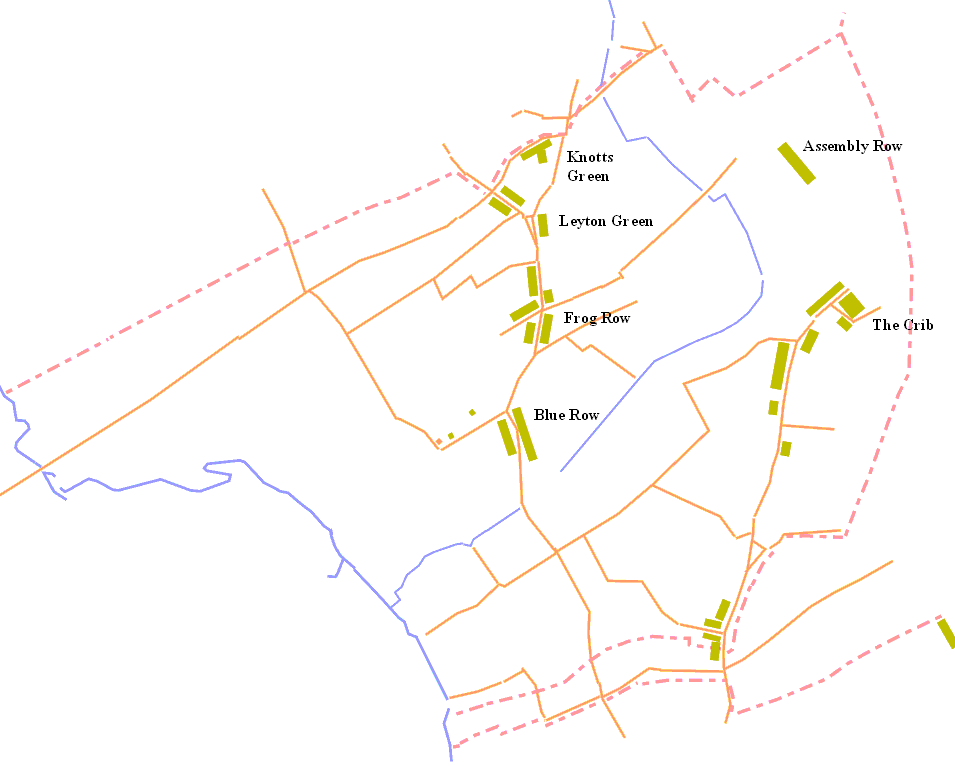. > ...
the history of Leyton and Leytonstone
from . dot to … dots – with plenty of spaces

the landscape (continued)
Arable and meadow were thought in 1796 to be about equal, but by 1843 there were 912 acres of grass to 605 acres of arable. The reduced area under crop may explain why proportionately fewer families were supported by agriculture in 1831 than in 1811. The slight decrease in population in 1831 was attributed at the time to a lack of employment 1.

To the north and east of Leyton were the ‘Flats’, open space comparable to Hampstead Heath, Putney or Blackheath, and like those places popular locations for the houses of the prosperous.
Ordinary people’s homes were in clusters : between Leyton Green and Lea Bridge Road, sections of Leyton High Road : Frog Row near what became Abbotts Park, Blue Row south of the Lion & Key, and between Browning Road and the Green Man Pond (known as ‘The Crib’).

1793 (execution of Louis XVI of France)
to 1837 (start of Queen Victoria’s reign)
Click on the map to enlarge it